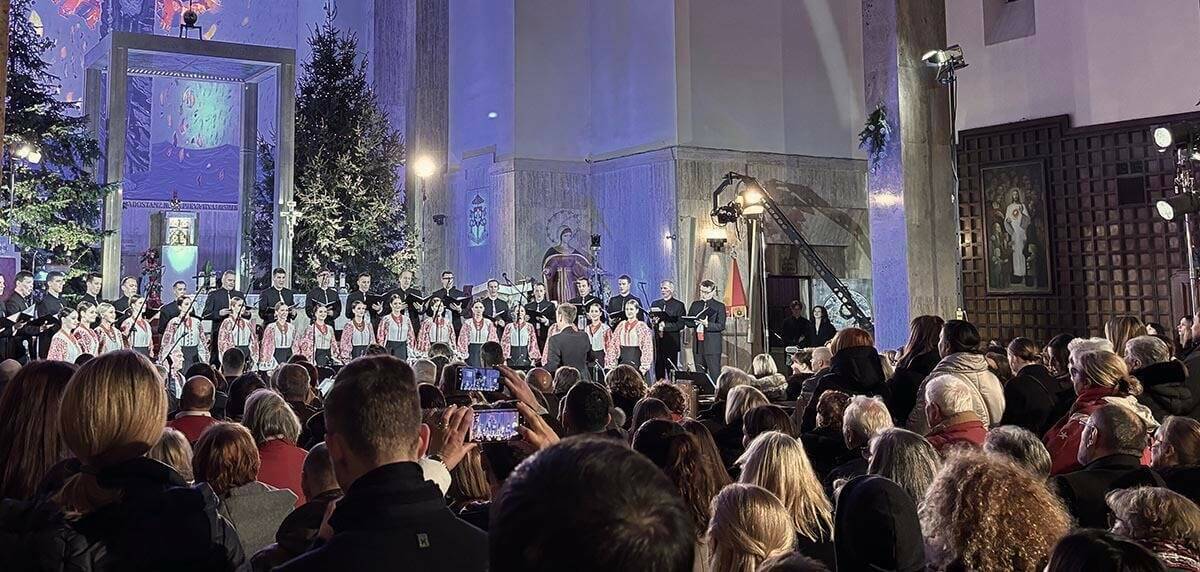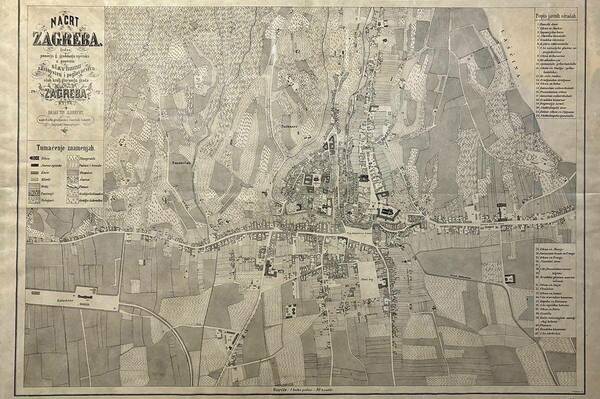
Anselma Panic ’24 is an undergraduate architecture student at the Notre Dame School of Architecture. During the winter break of the 2023-24 academic year, she traveled to Zagreb, Croatia, with support from the Nanovic Institute for European Studies. During this time, she completed essential research for her thesis project, a Cultural Arts Center in Zagreb.
This winter break, I traveled to Zagreb, Croatia to conduct research for my final thesis project within the Notre Dame School of Architecture. At the heart of my project lies the aspiration to revitalize Croatia's sociocultural traditions by designing a Cultural Arts Center. This envisioned center, positioned prominently in the city, aims to showcase the nation's heritage by housing an ethnographic museum and a performance theater dedicated to Croatian folk dance. The primary objectives of my trip were to understand the intricate history of the nation and city and to gather site-specific data crucial for my final project.
The invaluable experiences I had varied from delving into the architectural landscape through site documentation to visiting an ethnographic museum and the Croatian National Theatre. A crucial portion of my trip involved on-site documentation of Trg Bana Jelačića—the main square of the city and the site of my project. Sketching and taking critical measurements of the square helped me establish a strong foundation for my project.
This experience not only deepened my understanding but also cultivated a lasting appreciation for the profound role of history in shaping our built environment.
The ethnographic museum allowed me to closely examine and document the intricate details of its array of traditional costumes. Each costume told a unique story of its region, offering a nuanced understanding of the nation’s heritage. Furthermore, studying the museum's organizational structure provided insights into effective ways of showcasing and preserving cultural artifacts, influencing my design for an ethnographic museum. The Croatian National Theatre tour enriched my understanding of essential theater spaces, offering practical insights into an efficient and functional production environment. Witnessing the integration of acoustic design within the theater's performance space informed my approach to creating a harmonious relationship between architecture and the experiences of performers and the audience.

My exploration extended beyond the study of architectural typologies to embrace the city's history and cherished traditions. I had the opportunity to attend a Christmas concert by the renowned Croatian folk dance group LADO. The vibrant costumes and resonant folk songs provided a captivating experience that richly illustrated Croatia's cultural heritage. However, the venue struggled to accommodate the number of attendees, indicating a clear demand for a dedicated space. This highlighted the community's collective enthusiasm for cultural performances and emphasized the need for a Cultural Arts Center to serve as a hub for sharing, celebrating, and preserving these cultural traditions.
LEFT: 1864 map of Zagreb; RIGHT: 1895 photo of Trg Bana Jelačića.

The tour of the Croatian State Archives was another pivotal event of this trip, offering a historical perspective through old maps that traced Croatia's geographical evolution. The exploration of the Zagreb City Museum, another building deeply rooted in preserving and showcasing the city's history, was also enlightening. Navigating the comprehensive exhibitions allowed me to form a nuanced understanding of Zagreb's vibrant past. Particularly impactful was the exhibit on Trg Bana Jelačića itself, which allowed me to witness my research site’s transformative journey over the years through historic photographs and documents. These experiences at the Archives and the City Museum deepened my appreciation for preserving history and played a pivotal role in informing and contextualizing my work for my final thesis project.
In Zagreb, my exploration emerged as a rich source of insights, portraying the city as a vibrant learning environment that significantly influenced and enriched my research pursuits. This experience not only deepened my understanding but also cultivated a lasting appreciation for the profound role of history in shaping our built environment.
Read more student stories on Nanovic Navigator

